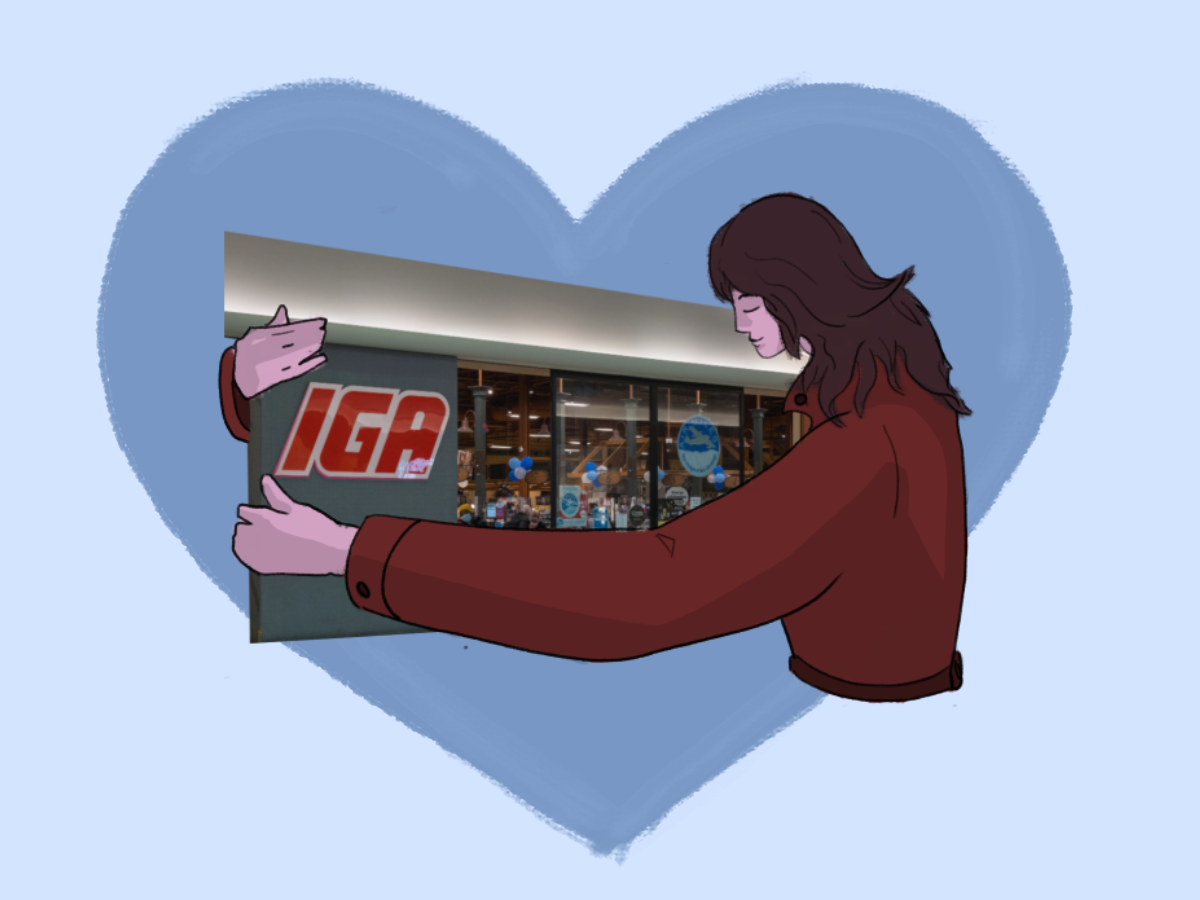Spiritual connection can be found in the most mundane places
It may seem peculiar to admit, but one of the spaces I feel the most unabashedly Jewish is in a chain grocery store.
I currently live in Outremont, my small apartment building nestled amongst the rows of beautiful houses containing large, lively Hasidic families. Between Lipa’s Kosher Market, Continental Deli, and the dozens of synagogues, I could definitely get my share of Jewish culture anytime I left the house. But, as much as I love a Cheskie’s black and white cookie, as a secular(ish) reform Jew, these aren’t really my people.
However, a forty-minute bus ride away, at an unassuming IGA, that’s where my people are.
My grandparents immigrated to Canada around 1953 as refugees of the Holocaust. The war broke out when my grandmother was a young teen, and after losing all of her family other than a sister and cousin, likely to Auschwitz but we’ll never know, she met my grandfather in a labour camp. After liberation, the pair were processed through Italy, went to Israel, then finally arrived in Montreal.
Our family began as working class Mile End Jews, as many post-War Ashkenazi immigrants did. In comparison to the more affluent “uptown” Jews of Westmount, who had already assimilated to Canadian culture through a couple generations of living here, “downtown” Jews like my family had a difficult time initially, adapting to two new languages and secular life, all while reeling from the most awful trauma imaginable.
By the 1980s, after moving through multiple Montreal boroughs, my grandparents, again following the trends of their Polish Jewish peers, finally settled in Côte-Saint-Luc. And there they lived until they passed — my grandfather before I was born and my grandmother this past summer.
Everytime my parents and I would travel to Montreal to visit my grandmother, a trip to the Cavendish Mall IGA was inevitable. Beginning as an opportunity to make sure my grandmother got all of her granddaughter’s favourite foods, and later because driving herself became impossible, the IGA factored into every family trip to Montreal.
Growing up in suburban Virginia, never had I seen so much Jewish food in one place. Or, honestly, Jewish food for sale in general, other than a lonely box of Passover matzah inexplicably stocked in a Hanukkah display.
The IGA has been a constant, not just for my family, but for the large Jewish Côte-Saint-Luc community. The store has a sizable kosher section spanning not only the Eastern European Jewish staples like knishes and verenikas, but also babaganoush and harissa to accommodate the more recent influx of Sephardic Jews into the neighbourhood.
Early in the COVID-19 lockdowns, the Cavendish IGA briefly closed its doors to shoppers. IGA’s parent company Sobeys stated that their decision was made to limit the amount of times residents were leaving their houses. With Côte-Saint-Luc’s especially elderly population, this call was made in an attempt to protect residents from disease. However, the move created a backlash from older residents, who either did not have access to or proficiency with computers and online ordering.
On top of the accessibility concerns of online shopping, closing the Cavendish IGA limited the social aspect of shopping for not only the older community, but Jewish Côte-Saint-Luc residents in general.
Much has been said about food and cooking as community-making, but why do we not extend this thought to the grocery shopping experience?
In Côte-Saint-Luc, the IGA has become somewhat of a cultural hub for the community, as, especially during the pandemic, it’s one of the few places community members, mostly older adults, will get a chance to see their neighbours.
I don’t go to the Cavendish Mall much these days. Since my grandmother’s passing, I’ve only been out to Côte-Saint-Luc a few times to help clean out her apartment. But I went this past week, partially to have an excuse to get some reading done one the bus, but mostly because in the stress of exam season, I was craving the warm embrace of Jewish carbs.
Once I passed the extensive bakery section, I was greeted by a giant Hanukkah display. “A bit early?” I chuckled to myself, thinking about the cliché of Christmas decorations popping up as soon as Halloween passes. Then, I realized I didn’t even know when Hanukkah begins this year. Turns out it’s Nov. 28, so the joke’s on me.
But after the twinge of pain knowing that Hanukkah will have come and gone before I’m even done with finals, I thought: where else would I come face to face with a kiosk full of dreidels, menorahs, and adorned with an image of a yarmulke-clad cartoon boy?
That’s the thing about the Cavendish Mall IGA. The mundane fact that matzah ball soup mix is sold all year (in a section that actually corresponds to the correct holiday), that it’s the only place I’ve ever found kasha varnishkes outside of my dad’s kitchen, that I can walk around on a Friday early afternoon, see a box of candlesticks in my fellow shopper’s cart and share a knowing look.
Though I had no real reason to go to the IGA recently, even without my grandmother to guide me to the good gefilte fish, the experience still ignited something comforting in me that I can’t quite articulate. Maybe it’s God, maybe just good chicken soup.
Feature graphic by Kaitlynn Rodney and James Fay
